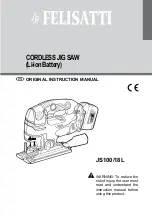
476
A
PPENDIX
D: C
ONNE
X
TIONS
H.323 G
ATEWAY
Bridges and switches are used to segregate areas of congestion within a
local network (switches are multiport bridges). Routers perform a similar
function but at the Layer-3 level where they perform conversions
between LAN and WAN protocols. Firewalls, which are often built into
routers, protect intranets from unauthorized internet users.
All of these devices can filter packets based on source address,
destination address or packet type. Depending on how the devices are
configured, they can let packets pass or they can block them.
Quality of Service
Unlike switched network connections, Internet voice connections consist
of a sequence of numbered data packets. Packet transfers across the
Internet are subject to delays or loss or both. If these delays are great
(larger than 200 ms), or if the packet loss is excessive, voice quality
deteriorates noticeably. The round-trip delay is typically no greater than
400 ms. You can test this by using several “ping” commands.
Voice conversations occur in “real-time,” so these packets need to be
delivered in a consistent manner and with the shortest delay. The goal is
to deliver 32 regularly spaced packets to the recipient every second.
The frequency response, dynamic range, and noise of a voice
conversation depend on the voice representation. If all data packets reach
their destination, the system provides voice of a specified quality.
The H.323 standard accommodates alternative voice compression
standards that allow users to trade some voice quality for bandwidth by
selecting a different compression standard (G.711 or G.723).
Consequently, packet loss and delay are crucial to the Quality of Service.
Packet Loss
Packet loss can occur for reasons discussed in
Bandwidth
,
Congestion
,
and
Connections
, next.
Bandwidth
Bandwidth is the capacity to carry information. By using H.323, the same
bandwidth that supports one uncompressed G.711 voice connection can,
instead, support several compressed G.723 conversations with little
noticeable difference in quality.
Summary of Contents for 3C10402B
Page 18: ...18 ...
Page 22: ...22 ABOUT THIS GUIDE ...
Page 26: ...26 CHAPTER 1 INTRODUCTION ...
Page 74: ...74 CHAPTER 3 FEATURE SETTINGS ...
Page 130: ...130 CHAPTER 5 TELEPHONE CONFIGURATION ...
Page 156: ...156 CHAPTER 7 CALL DISTRIBUTION GROUPS ...
Page 194: ...194 CHAPTER 8 PSTN GATEWAY CONFIGURATION ...
Page 256: ...256 CHAPTER 10 SIP MODE OPERATIONS ...
Page 328: ...328 CHAPTER 11 DIAL PLAN ...
Page 360: ...360 CHAPTER 13 DOWNLOADS ...
Page 370: ...370 CHAPTER 14 LICENSING AND UPGRADES ...
Page 406: ...406 CHAPTER 16 NETWORK MANAGEMENT ...
Page 412: ...412 CHAPTER 17 COUNTRY SETTINGS ...
Page 450: ...450 APPENDIX A INTEGRATING THIRD PARTY MESSAGING ...
Page 456: ...456 APPENDIX B ISDN COMPLETION CAUSE CODES ...
Page 510: ...510 APPENDIX F OUTBOUND CALLER ID AND 911 SERVICE ...
Page 546: ...546 APPENDIX G NBX ENTERPRISE MIB ...
Page 566: ...566 GLOSSARY ...
Page 578: ...578 INDEX ...
Page 582: ......
















































